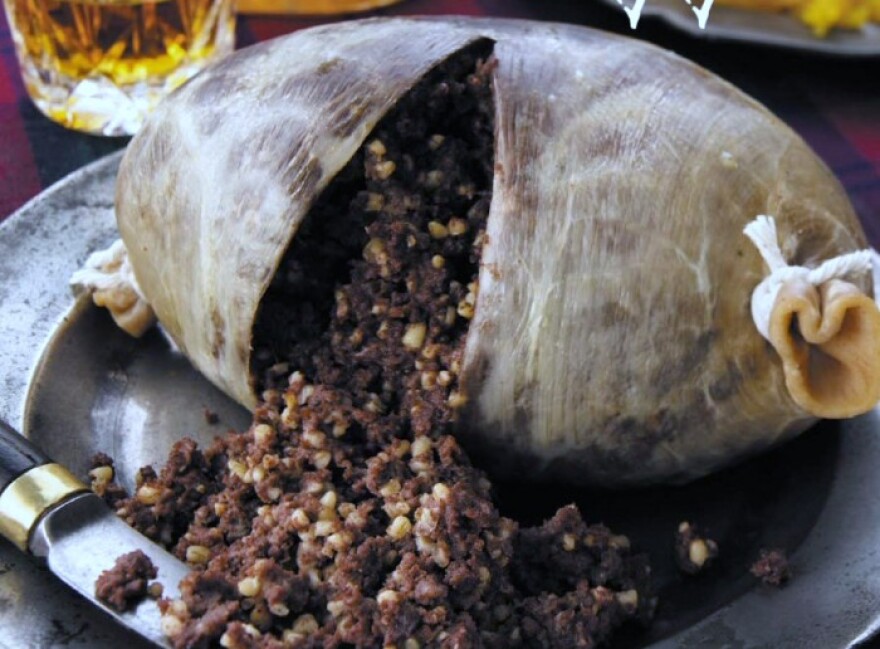Ah, Haggis…Great chieftain o' the puddin' race, and much misunderstood! - Robbie Burns
Haggis is a traditional Scottish dish, considered by many to be the national dish of Scotland thanks to Robert Burns' 1787 poem “Ode to a Haggis”.
It’s essentially a large sausage, or meat pudding, made with sheep's innards (heart, liver and lungs); as well as onion, oatmeal, suet, spices, and salt. Traditionally this was encased in the animal's stomach and then simmered for three hours.
As the 2001 English edition of the Larousse Gastronomique puts it, "Although its description is not immediately appealing, haggis has an excellent nutty texture and delicious savoury flavour".
The earliest known written recipe is for a dish called ‘hagese’ and is found in a verse cookbook dated about 1430 from Lancashire in North West England. Early Romans apparently made a kind of haggis, and a primitive kind of haggis even makes an appearance in Homer’s Odyssey
Haggis was most likely born of Scottish frugality, as a smart way to utilize the least expensive cuts of meat and the innards as well. Some think it developed from the need to quickly use the leftovers while out hunting, others that the wives of Scottish cattle drovers made haggis as a kind of portable ration for the men to eat on their long journeys down to the cattle markets in Edinburgh. Certainly, when a Chieftain or laird had an animal slaughtered, he’d keep the best cuts for his own table, while the workmen would take the scraps home as their share.
Haggis is traditionally served on Burn’s Night, January 25, the birthday of beloved Scottish poet Robbie Burn’s. Burns Suppers throughout the world open with the haggis being proudly piped into the banquet hall, and Burn’s famous “Ode to a Haggis” read aloud over the platter of freshly made haggis. It is traditional to serve it with boiled and mashed “neeps and taties” (that’s turnip and potato for all you non-Scots, and hopefully a lovely bowl of Cock-A-Leekie soup. Some folks have been known to anoint the haggis with a bit of Drambuie, but all agree that a dram of Scotch Whiskey is the perfect toast.
Today, Haggis is widely available in supermarkets in Scotland year-round, sometimes sold in tins or even containers which can be microwaved. You can buy vegetarian haggis if you like. In a hurry? Scottish fast food includes batter-fried haggis & chips, haggis burgers, and even an Indian take-away, Haggis pakora.
Here in the Lehigh Valley, we have our very own celebration of King Haggis every September at the Celtic Classic Festival in Bethlehem. Competitors travel from as far away as Alaska for a chance to win the title of "Celtic Classic Haggis Eating Champion." Haggis Bowl 2014 officially kicks off the Festival on Friday, September 26 on the Highland Field. The rules are simple – whoever eats a pound of haggis the fastest wins – no condiments, no sauces, no neeps or taties. Beverages, however, are happily allowed. If you’re ready to conquer the haggis, find out more at www.celticfest.org. Robbie Burns would be proud.
For Celtic Cultural Alliance, this is Kate Scuffle. Slainte.


